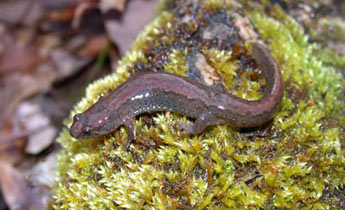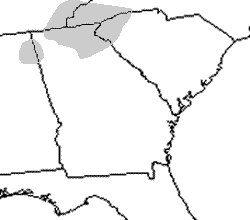Northern / Spotted Dusky Salamander (Desmognathus fuscus / conanti)


Photos by J.D. Willson unless otherwise noted
Description: The dusky salamanders (genus Desmognathus) are distributed throughout eastern North America. Most dusky salamanders are variable with regard to their coloration, and our most common species is no exception. Desmognathus fuscus is the most wide-ranging of the dusky salamanders, being found from southern Canada all the way to the Gulf of Mexico. Recently the spotted dusky salamander (D. conanti) has been elevated from a subspecies of D. fuscus to a full species. Both species are abundant in stream habitats in the Piedmont and Mountains of South Carolina and Georgia.
Description: Desmognathus conanti is a moderately stout salamander with a moderately keeled tail, 6.4 – 12.7 cm TL (2.5 – 5 in). It usually has 6-8 pairs of golden spots on dorsum, which in adults may fuse to form a light stripe with a dark, irregular border. The belly is light with dark flecks. Coloration varies widely throughout range. Until recently, the spotted dusky salamander was considered a subspecies of the Northern Dusky Salamander (D. fuscus). These two species are very similar in appearance and are best differentiated by range.
Range and Habitat: This salamander is restricted to the Piedmont and lower elevations of the mountains. They are abundant in and near cool streams and small rivers.
Habits: Adult Spotted Dusky Salamanders take refuge under logs, rocks, and leaf litter during the day, and move on stream banks at night. During courtship, the male stimulates the female by transferring pheromones from his mental gland, usually by rubbing his chin against the female’s head or body. Eggs are laid under streamside debris and larvae are fully aquatic
Conservation Status: State listed common.
Pertinent Reference:
Verrell, P. A. 1995. The courtship behavior of the spotted dusky salamander, Desmognathus fuscus conanti (Amphibia: Caudata: Plethodontidae). Journal of Zoology, London 235: 515-523.
Account Author: Aaliyah Greene, University of Georgia – revised by J.D. Willson
